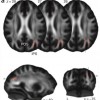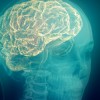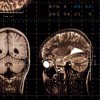Posts tagged neuroimaging

White Matter Matters!
Oct 19th
Can you change the structure of your brain with practice? A slew of papers in the last decade affirm that yes, you very much can. Probably the best known is a study by Maguire and colleagues, who found structural differences in the hippocampi of London taxi drivers — presumably the result of having to learn London’s 25,000 streets. [We turned the Maguire et al. study into an online experiment, which you can play here].
To date, every study that identified practice-related changes in brain structure located these changes in grey matter. Now, for the first time, a paper by Scholz and colleagues More >

Psychosis – New Study Links Gene Variant to Brain Structures
May 12th
A study published in last week’s Science magazine shows how genomic science and neuroimaging can be combined to deliver insights into cognitive disorders. As well as providing an intriguing look into the neurobiology of psychosis, the study reflects a growing trend toward inter-disciplinary research in the neurosciences,
What did the study show?
Psychosis is a disordered cognitive state that can include disorganized thoughts, delusions, or hallucinations. It is a common symptom of schizophrenia and has been linked to a number of brain areas, including the the dorsolateral prefrontal cortex (DLPFC) and the hippocampus. Schizophrenia is also strongly associated with a number of genes, and More >

Can We Diagnose PTSD with Brain Scans?
Apr 18th
Duke University’s Rajendra Morey was in the news this week following a presentation at the World Psychiatric Association Congress in Italy. Dr Morey’s group recently published a paper equating symptoms of post posttraumatic stress disorder (PTSD) with “markedly different neural activity”. Dr. Morey raised the possibility of using brain scans to diagnose PTSD, thereby catapulting herself into the science pages of Forbes, Reuters et al. She joins a lengthy list of researchers that have whetted our appetite with tantalizing suggestions about the predictive power of neuroimaging. Sadly, the list of those who have followed through on this promise is not quite so More >
